Prefilling an oil filter means adding oil to it before installation. This helps reduce the time it takes for the engine to regain proper oil pressure after an oil change. It ensures the engine receives lubrication faster preventing unnecessary wear and tear.
Changing your car’s oil filter is important for engine health. Many wonder should you pre-fill an oil filter? It’s a common debate among car enthusiasts. Some argue it helps the engine start smoothly. Others believe it’s unnecessary. Before deciding consider the engine’s design and manufacturer recommendations.
Prefilling an oil filter before installation helps reduce the time it takes for oil to reach vital engine components during startup. This ensures better lubrication and minimizes wear. However, it’s essential to follow the manufacturer’s guidelines, as some engines may require filters to be installed dry.
Purpose of Pre-Filling Oil Filters
Pre-filling oil filters is a crucial step in the process of changing engine oil. The primary purpose of pre-filling an oil filter is to minimize the time it takes for the engine to regain proper oil pressure after an oil change.
When an oil filter is pre-filled it already contains oil before being installed ensuring that the engine receives immediate lubrication upon startup. This helps protect vital engine components from unnecessary wear and tear during the critical moments when the engine first begins running after an oil change.
One of the key advantages of pre-filling an oil filter is that it reduces the risk of dry starts a situation where the engine runs momentarily without proper lubrication, which can lead to increased friction and potential damage to engine parts such as Bad Oil Filter.
By pre-filling the oil filter the system maintains oil circulation more effectively preventing dry starts and promoting a smoother transition when the engine is restarted after an oil change.
This simple yet essential step along with addressing issues like a Bad Oil Filter contributes to the overall longevity and optimal performance of the engine.
To pre-fill an oil filter simply pour a small amount of oil into the filter housing, allowing the filter media to absorb the oil.
This ensures that when the filter is installed it already contains lubricating oil promoting quicker oil pressure restoration upon startup. Remember taking the time to pre-fill an oil filter is a small but impactful measure in maintaining the health and efficiency of your engine.
Preparing a New Oil Filter for Installation
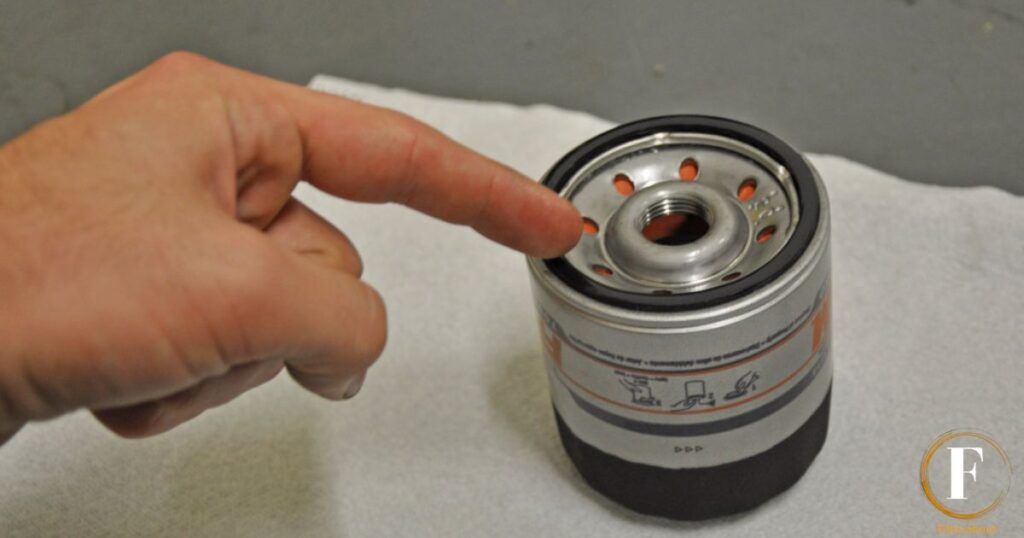
| Step | Instruction |
| 1 | Gather necessary tools: oil filter wrench drain pan and new oil filter. |
| 2 | Locate the old oil filter and use the wrench to carefully remove it. |
| 3 | Allow remaining oil to drain into the pan and dispose of the old filter properly. |
| 4 | Check the filter mounting surface for any debris or old gasket material clean if necessary. |
| 5 | Apply a thin layer of oil to the rubber gasket on the top of the new oil filter. |
| 6 | Pre-fill an oil filter with a small amount of oil to ensure proper lubrication upon startup. |
| 7 | Install the new oil filter hand-tight then use the wrench to secure it snugly. Double-check for leaks after starting the engine. |
Drain the Oil and Screw-Out the Filter
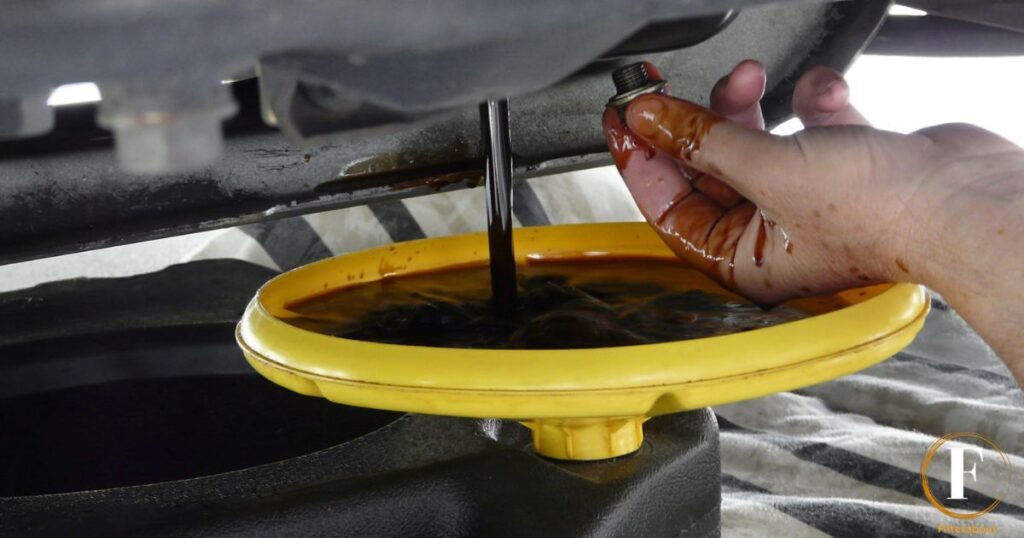
When performing an oil change on a vehicle draining the old oil and replacing the oil filter are crucial steps in maintaining engine health. To begin locate the oil drain plug underneath the vehicle and use a wrench to loosen it.
Position an oil pan beneath to catch the draining oil. Allow the oil to fully drain out before securely tightening the drain plug back into place. This step ensures that contaminants and old oil are removed promoting optimal engine performance.
After draining the oil the next step involves removing the old oil filter. This is located near the engine and can be unscrewed using an oil filter wrench. Be cautious of hot surfaces, and place an oil pan beneath the filter to catch any residual oil.
Once removed inspect the old filter for any signs of damage or wear. To enhance the efficiency of the oil change process it’s advisable to pre-fill the new oil filter with oil before installing it. This ensures that the engine receives oil more quickly upon startup reducing the time it takes for oil to circulate and lubricate vital components.
To pre-fill an oil filter pour a small amount of oil into the filter housing allowing the filter media to absorb the oil. This pre-lubricates the filter and prevents a delayed response in oil flow when the engine is started.
After pre-filling carefully screw the new oil filter into place ensuring it is tightened according to the manufacturer’s specifications. Completing these steps draining the old oil removing and pre-filling the oil filter and installing a new filter is essential for maintaining a healthy engine and promoting optimal vehicle performance.
Pre-Fill the Oil Filter and Install It

- Select the Right Oil Filter: Choose a high-quality oil filter that is compatible with your vehicle’s make and model. Refer to your vehicle’s manual for specifications.
- Locate the Oil Filter: Identify the current oil filter’s location in your vehicle. It is typically situated near the engine accessible from underneath the vehicle.
- Drain Old Oil: Before removing the old oil filter drain the existing oil from the engine. This is usually done by removing the drain plug at the bottom of the oil pan.
- Remove the Old Oil Filter: Use an oil filter wrench to loosen and remove the old oil filter. Be prepared for some oil to spill so have a drain pan handy.
- Pre-Fill an Oil Filter: Before installing the new oil filter pre-fill it with clean engine oil. Pour oil into the filter housing, allowing the filter media to absorb the oil. This step ensures that the engine has immediate lubrication upon startup.
- Check the Rubber Gasket: Ensure that the rubber gasket on the top of the new oil filter is in good condition. If it’s damaged or missing replace it to prevent oil leaks.
- Install the New Oil Filter: Screw the pre-filled oil filter into place by hand until the rubber gasket contacts the mounting surface. Then, tighten it an additional three-quarters of a turn using an oil filter wrench. This ensures a secure seal without over-tightening.
By following these steps you not only replace the oil filter but also implement the crucial practice of pre-filling the new filter for optimal engine protection.
Is it necessary to prime an oil filter?
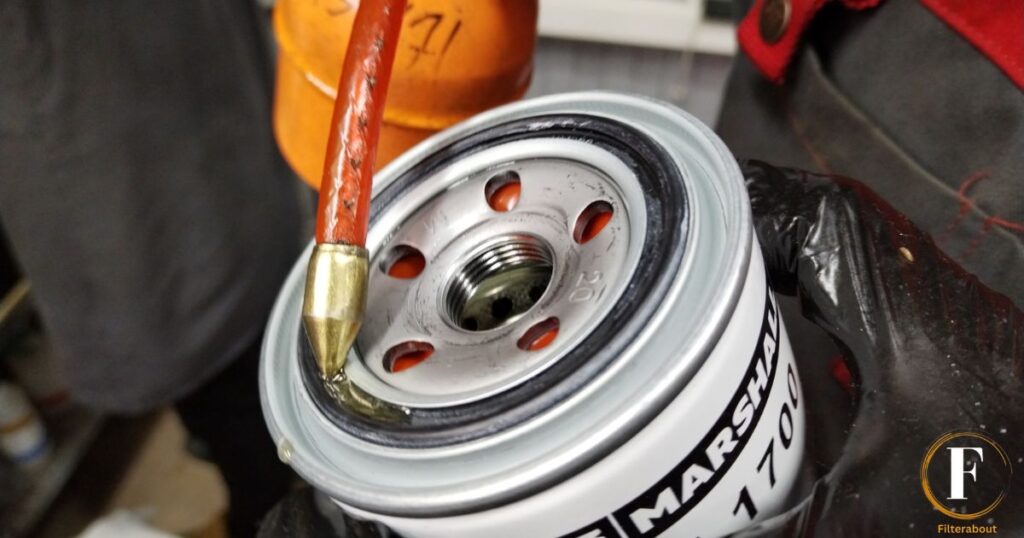
Priming an oil filter is a crucial step in ensuring the efficient and smooth operation of an engine. When an oil filter is not primed before installation it may initially lack the necessary lubrication and can lead to a delay in oil flow causing potential damage to engine components.
Priming involves filling the oil filter with oil before installing it allowing for immediate oil circulation once the engine is started. This process helps prevent dry starts which can be harmful to the engine.
One common practice related to priming an oil filter is known as Pre-Fill an Oil Filter. This involves manually filling the oil filter with oil before attaching it to the engine.
By pre-filling the oil filter, you ensure that the filter is already saturated with oil reducing the time it takes for the engine to establish proper lubrication upon startup.
This extra step can be particularly beneficial in situations where quick and efficient oil circulation is crucial such as during cold starts or after an oil change. Priming an oil filter including the practice of pre-filling is essential for maintaining engine health.
It helps prevent unnecessary wear and tear on engine components and ensures that the engine receives proper lubrication from the moment it starts. Taking the time to prime the oil filter contributes to the overall longevity and performance of the engine.
How to Pre-Fill Oil Filter?
Pre-filling an oil filter is a crucial step in the process of changing your vehicle’s oil to ensure proper lubrication and reduce the time it takes for the engine to regain optimal oil pressure. To pre-fill an oil filter start by applying a small amount of clean motor oil to the rubber gasket on the top of the filter.
This helps create a better seal and prevents the gasket from sticking during future oil changes. Pour a modest amount of oil into the center of the filter allowing it to saturate the filter media.
Pre-filling the oil filter facilitates a quicker and more efficient engine start-up minimizing the period of dry running that can occur when starting the engine with an empty filter.
When pre-filling an oil filter ensure that the oil you use is the same type and viscosity recommended by the vehicle manufacturer. This helps maintain the correct oil composition and ensures optimal engine performance.
After pre-filling carefully screw the oil filter onto the engine ensuring it is tightened to the manufacturer’s specifications.
Once the filter is securely in place, proceed with the rest of the oil change process including draining the old oil, replacing the oil filter, and adding fresh oil. By incorporating the step to pre-fill an oil filter you contribute to preserving your engine’s longevity and performance.
Pre-filling an oil filter involves lubricating the gasket and saturating the filter media with a small amount of clean motor oil before installation. This simple yet essential step helps minimize engine wear during start-up and promotes faster oil pressure restoration.
When pre-filling, use the recommended oil type and remember to tighten the filter properly. Following these steps ensures a smoother and more effective oil change, enhancing the overall health and longevity of your vehicle’s engine.
Consequences of Not Filling the Oil Filter
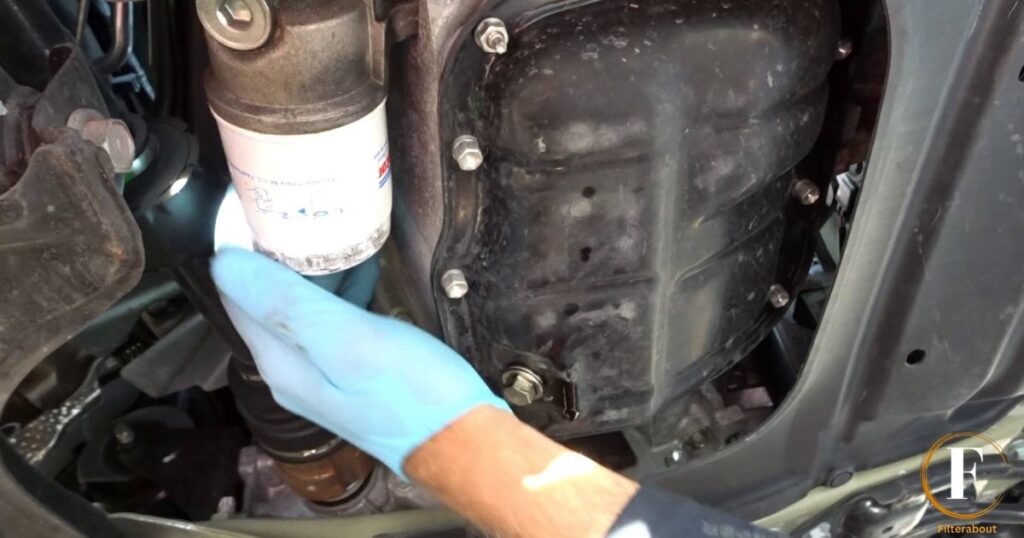
Neglecting to fill the oil filter before installing it in a vehicle can have serious consequences for the engine’s health. The oil filter plays a crucial role in trapping contaminants and debris that could otherwise circulate through the engine causing damage over time.
When the filter is not pre-filled it takes longer for the engine to establish proper oil pressure leaving crucial components vulnerable to wear and tear. This delay in oil circulation can result in increased friction reduced lubrication and potential long-term damage to the engine.
To mitigate these issues it is essential to pre-fill an oil filter before installation. Pre-filling involves pouring oil into the filter housing allowing the filter media to absorb the oil.
This ensures that when the engine starts there is an immediate and steady flow of oil, providing optimal lubrication to critical engine parts.
By incorporating the practice of pre-filling an oil filter into routine maintenance car owners can safeguard their engines from unnecessary wear and tear potentially extending the lifespan of the vehicle and preventing costly repairs.
The consequences of not filling the oil filter before installation can include delayed oil circulation increased friction and heightened vulnerability to engine damage.
To counteract these issues it is crucial to prioritize the practice of pre-filling an oil filter during routine maintenance, ensuring a smooth and efficient oil flow from the start and promoting the overall health and longevity of the engine.
Frequently Asked Questions
How much oil do you put in a new filter?
Fill the new oil filter about two-thirds full before installation to ensure proper lubrication and minimize the risk of dry starts.
Is hand tight oil filter good enough?
Hand-tightening an oil filter is generally sufficient, but it’s advisable to follow the manufacturer’s specifications for torque to prevent leaks or damage.
Why Not Fill Oil Filter Before Installing It?
Filling the oil filter before installation ensures immediate lubrication, reduces dry starts, and promotes quicker oil circulation, safeguarding the engine.
Conclusion
The debate over whether one should pre-fill an oil filter revolves around practicality and potential benefits. While some argue that pre-filling an oil filter reduces the time it takes for the engine to establish proper lubrication, others contend that modern engines are designed to quickly circulate oil upon startup minimizing any potential advantages. It is essential to consider the specific requirements of your vehicle and adhere to the manufacturer’s recommendations.
The keyword. Should You Pre-Fill an Oil Filter? Encapsulates the pivotal question at the heart of this discussion. A balanced approach is advisable evaluating the engine type manufacturer guidelines and personal preferences. Whether you choose to pre-fill or not regular oil changes and adherence to proper maintenance practices remain paramount for engine longevity and optimal performance.

Alexander Quinn is the author behind Filterabout.com. Known for expertise in diverse topics, Quinn’s content on the website reflects a versatile knowledge base catering to various interests.
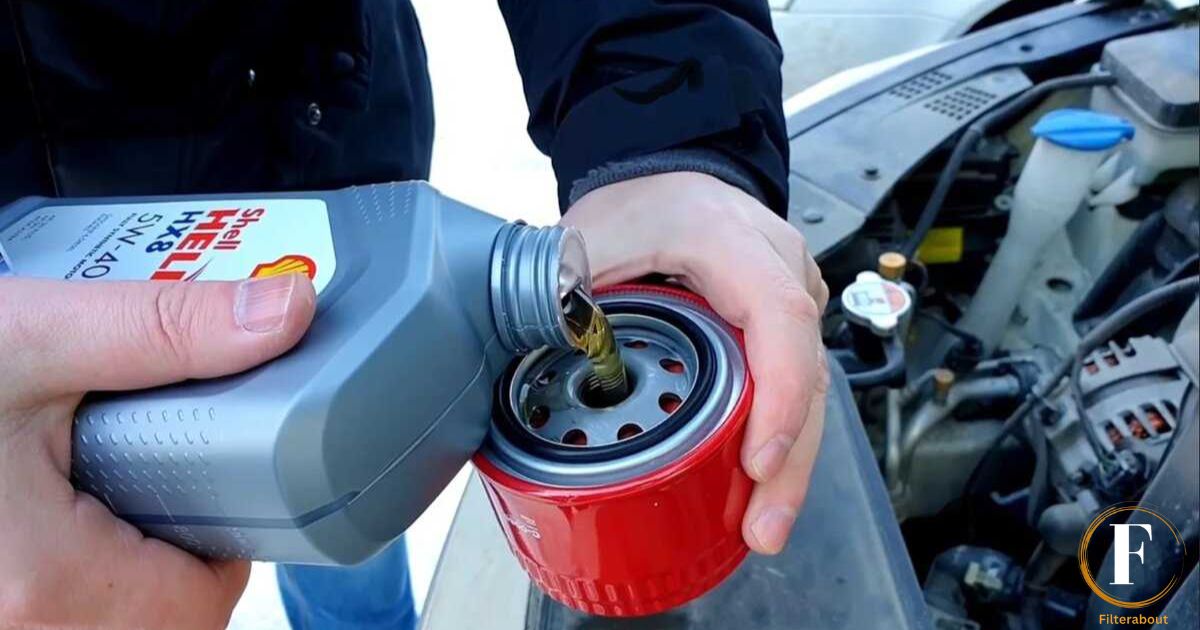


![Jynxzi Age, Net Worth, Career[2024]](https://filterabout.com/wp-content/uploads/2024/05/Who-Is-Shanin-Blake-Age-Wiki-Parents-Dating-Net-Worth-300x148.jpg)
![Jynxzi Age, Net Worth, Career[2024]](https://filterabout.com/wp-content/uploads/2024/05/Jynxzi-Age-Net-Worth-Career2024-300x148.jpg)


![Kutty Surumi Net Worth, Bio, Age[2024]](https://filterabout.com/wp-content/uploads/2024/05/Kutty-Surumi-Net-Worth-Bio-Age2024-300x148.jpg)



![Jynxzi Age, Net Worth, Career[2024]](https://filterabout.com/wp-content/uploads/2024/05/Who-Is-Shanin-Blake-Age-Wiki-Parents-Dating-Net-Worth-150x150.jpg)